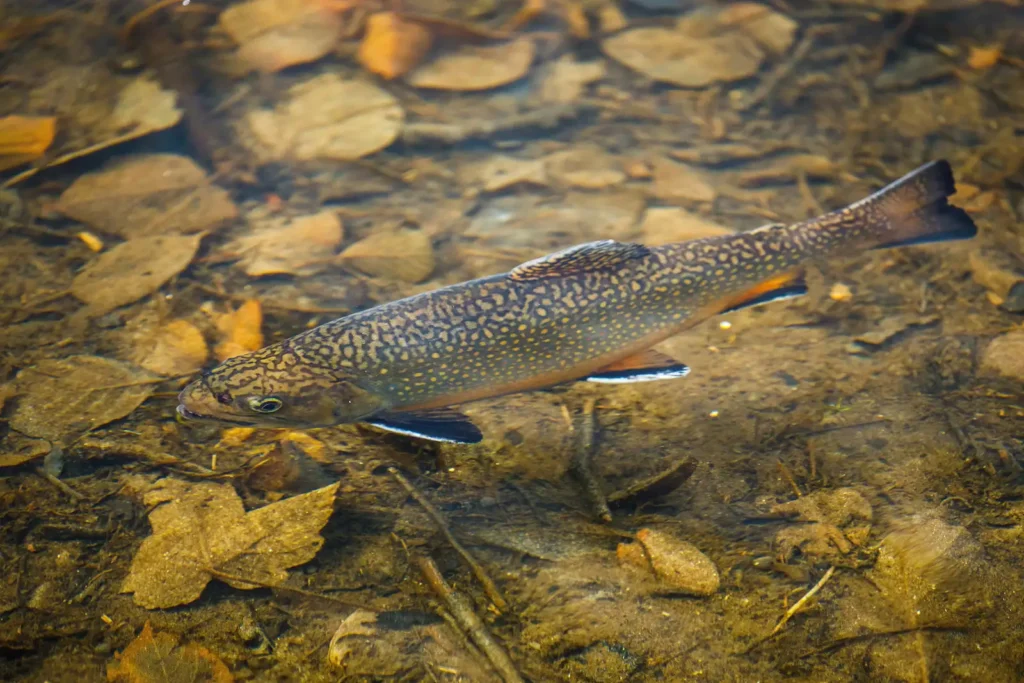Part of the Stories from the Greenbelt series
The Comeback Story
On the site of a former cattle farm in the hills of Caledon, trout are making a comeback. For anyone who’s had the privilege of holding one of Ontario’s vibrant, speckled brook trout in their hands – maybe on the end of your own fishing line, or gently pulled from the net of a researcher – this is welcome news and the result of many years, and many individuals.
In Ontario, we are fortunate to have our very own, made-in-Ontario solution for helping to keep our drinking water safe, protect our communities from flooding and take action for our rivers: conservation authorities.
March 14, was the International Day of Action for Rivers.
In Ontario, we are fortunate to have our very own, made-in-Ontario solution for helping to keep our drinking water safe, protect our communities from flooding and take action for our rivers: conservation authorities.
Conservation Authorities, 36 in total across Ontario, are dedicated to protecting, restoring and enhancing our local natural environment on a watershed basis. A watershed is the area of land that all drains into a single body of water, like a river. The health of land and water, and our communities, are all connected. And the actions we take on land, whether it’s building new roads and buildings, growing our food, or planting trees, has an impact our rivers.
I’ve come to know one particular Ontario river, the Credit River, along with a number of special places in the Credit River Watershed. That watershed covers nearly 1,000 square kilometres of the western Greater Toronto Area, stretching from the headwaters in the Town of Orangeville, through the Greenbelt in Caledon and Halton Hills, down through the cities of Brampton and Mississauga, to where the river flows into Lake Ontario at Port Credit.
This watershed is the jurisdiction of Credit Valley Conservation (CVC). The Upper Credit Conservation Area, located in Alton, ON within the Greenbelt, is one of its special places.
In 2005, CVC secured several connected properties to create Upper Credit Conservation Area.
The reach of the Credit River flowing through the Conservation Area is identified as a critical coldwater fish community, and home to brook trout. Prized by anglers and ecologists alike, brook trout are Ontario’s only native river trout and thrive in pristine, wild, and cold streams and rivers.
Years ago, when the property was an active farm, the natural width of the channel was more than doubled in some places to allow cattle to access the river. River-side trees and vegetation were removed, grazed or trampled. The resulting wider, shallower, and un-shaded river had warmer water, and the trout went elsewhere.
Since 2009, it’s been an epicenter for on-the-ground action by Trout Unlimited Canada’s Greg Clark Chapter, Credit Valley Conservation, and other partners. Thousands of trees and shrubs have been planted, including along the riverbanks, providing critical, cooling shade. Working with volunteers, including high-school-aged youth through CVC’s Conservation Youth Corps program, we’ve installed in-stream sediment traps made from old Christmas trees to narrow the river and deepen the channel while providing habitat and cover for fish. The results: colder water and, of course, trout.
I’ve been onsite many times over the years for tree planting projects, youth volunteer workdays, education programs and community events. The atmosphere is always fun and focused on action. Volunteers have collectively contributed over 57,000 hours of work at this site. Hard, important conservation work. All I need to see is the flick of a dorsal fin through the surface of the water or the shadow of a speckled trout dart across the cobbled bottom to know the results are worth it. I would encourage you to visit the property and walk down to where the foot bridge crosses the river and take a look for yourself.
Conservation matters. Brook trout matter. And rivers matter. Your local conservation authority is taking action to protect our land and water, our rivers and the watersheds they’re a part of, and keep our communities safe. There are probably even some nearby volunteer opportunities coming up this spring. In the spirit of the International Day of Action for Rivers, take a moment to consider the brook trout and their Upper Credit comeback story. With a bit of help, some partners and hard work, transformation is possible. Now is a great time to take action.
Andrew Kett is the Senior Manager of Education and Engagement at Credit Valley Conservation.
To read our previous blogs, please click here.




